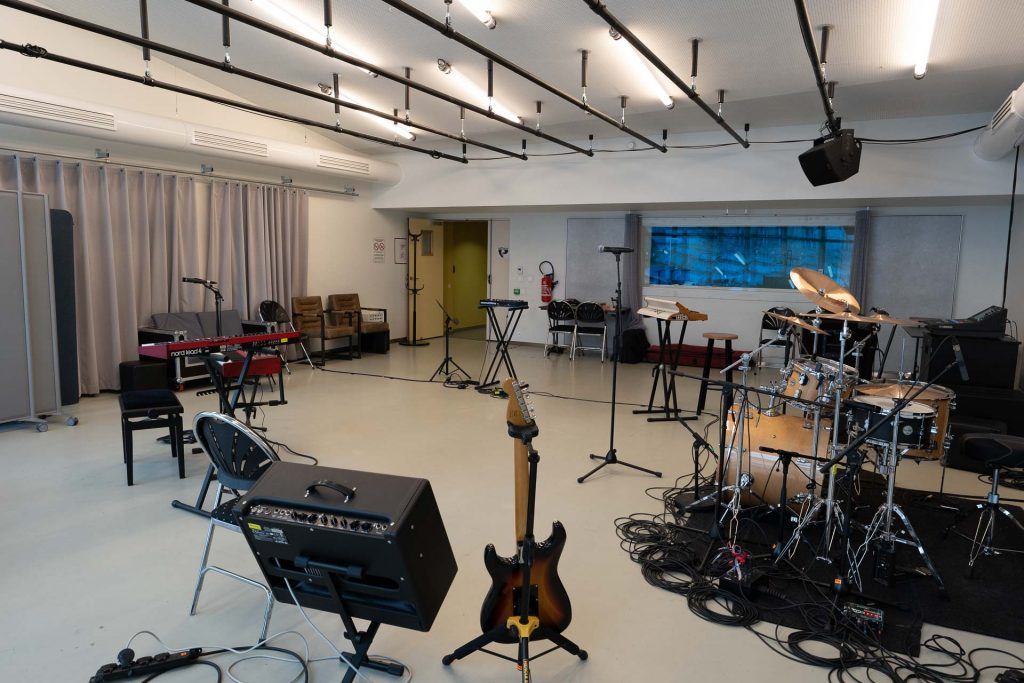Songwriting: Guitars
 As a songwriter, but also as a producer, it can be useful to be able to play an instrument. This gives you extra freedom within the creative process that is songwriting and music production. At the Wisseloord Academy there is also the possibility to improve your skills on the guitar, for example.
As a songwriter, but also as a producer, it can be useful to be able to play an instrument. This gives you extra freedom within the creative process that is songwriting and music production. At the Wisseloord Academy there is also the possibility to improve your skills on the guitar, for example.
But if playing a guitar is something completely new to you, it is nice to know the ins and outs of this instrument first.
Types of guitars
First, there are many types of guitars. To keep it easy for now, we distinguish these into three different types: acoustic guitars, electric guitars, and bass guitars.
Acoustic guitars have a sound box through which, after striking the strings, the sound, as it were, reverberates inside the wooden ‘body’ of the guitar and then comes out ‘amplified’ through the sound hole. If you play these guitars without amplifying them through a sound system, you can still hear them quite well.
In general, most electric guitars do not have a sound box, unlike acoustic guitars. We call electric guitars without a sound box solid body guitar. There are several exceptions, which we call hollow body guitars. But hollow-body guitars, if they are not amplified with a sound system, are almost impossible to hear when played, just like solid-body guitars.
Electric guitars are therefore often amplified via an amplifier to which the guitar is connected. Many guitarists also use a pedal board, which contains various effects that they can apply to the sound of their guitar. Most bass guitars also work according to this principle.
The construction of a guitar
The construction of an acoustic guitar roughly consists of 3 parts: the body, the neck, and the headstock. The resonance box is the large, shaped piece of wood to which the long piece of wood (the neck) is attached with the headstock at the end. From the headstock of the guitar, the strings are stretched all the way to ‘the bridge’ of the guitar. You can find this on top of the sound box just next to the sound hole.
As soon as you strike the strings, a vibration is created that is amplified in the sound box and the amplified sound escapes through the sound hole.
There is a tuner on the headstock of the guitar. Those are the six knobs to which the strings are tightened. With these knobs you can make sure that each string is tuned to the right note. By turning those knobs, you change the tension on the strings; the higher the voltage, the higher the pitch.
The six strings float above the long neck of the guitar. On this neck are frets, small iron bars. The spaces between these frets are called keys. Pressing a string on one of these keys temporarily shortens the length of a string, making the pitch of a string higher when you strike it. This way you can get different tones from the guitar.
When you hit the right strings in the right places, you can start forming chords. The most common tuning of a guitar is E – A – D – G – B – E. Easy to remember via the mnemonic: Eat All Dag Get Big Easy.
Now that you have the basic knowledge of how a guitar is put together, you can start practicing!
